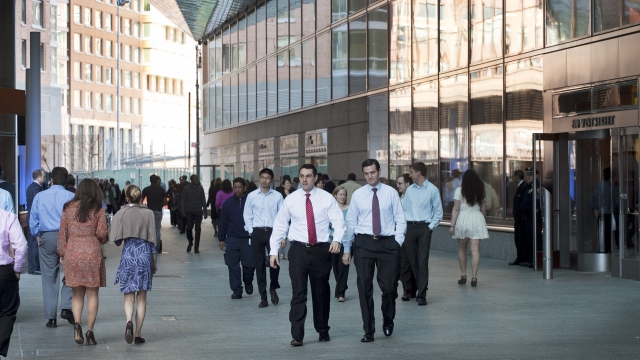Lately, many major companies are rolling out requirements for employees to start coming into the office, which many employees aren't too thrilled about. A major point of contention? What we have to wear.
Many Americans working from home have traded in pencil skirts and blazers for the casual comforts of home or maybe a nice shirt for zoom, but casual shorts.
But the truth is, this isn't a new development thanks to the pandemic. U.S. revenue for men's suits declined from $2.2 billion in 2013 to $1.9 billion in 2018. And to look even further back, an estimate in 1948 from a clothing manufacturers association put that revenue at $12.5 billion with inflation.
The pandemic may have accelerated the trend, but the decline in formalwear has been going on for decades now.
In the mid-20th century, formalwear was not just an office staple. For both men and women, suits and hats were the standard for everyday activities: from shopping for groceries to going to the movies to watching sports games.
But major fashion trends in the '60s and '70s opened the door for more variety within formalwear, especially as new styles were being seen on television.
SEE MORE: California Bans Discrimination Based On Natural Hair
Colorful power suits and trousers were in, and outfits that could be worn both to the office and after-work drinks were seen as more practical and fashionable. It was what Esquire Magazine called "the rise of loose-collar culture."
Soon, the rise of casual wear would become unstoppable, thanks to the khaki pants and button-down collared shirts in Silicon Valley.
The '80s and '90s saw the invention and rise of "business casual," what this 1995 article from the Chicago Tribune declared was a "confusing" new world. Silicon Valley has already embraced a culture of rule-breaking, creativity, and risk over conformity.
The rise of "athleisure" clothes during the past decades, like yoga pants and workout sneakers, coincided with this. By the time we reached the 2000s, formalwear was confined to only certain industries, and outside the office could be seen mostly during special occasions like weddings.
Though it's worth noting, not even traditional industries might be so strict on the suit much longer! In 2019, Goldman Sachs relaxed their dress code to "business casual."
Some fashion experts have noted that the cultural implications of formalwear have been transferred to some areas of casual dress.
Being able to work remotely and thus dress casually is more common in white-collar industries. One could argue there's a new flex of status with high-end athleisure brands like Lululemon, or streetwear from luxury brands like Gucci.
Changes in culture shape our changes in fashion, and we can trace those changes through our decline in formalwear.
Newsy is the nation’s only free 24/7 national news network. You can find Newsy using your TV’s digital antenna or stream for free. See all the ways you can watch Newsy here.



